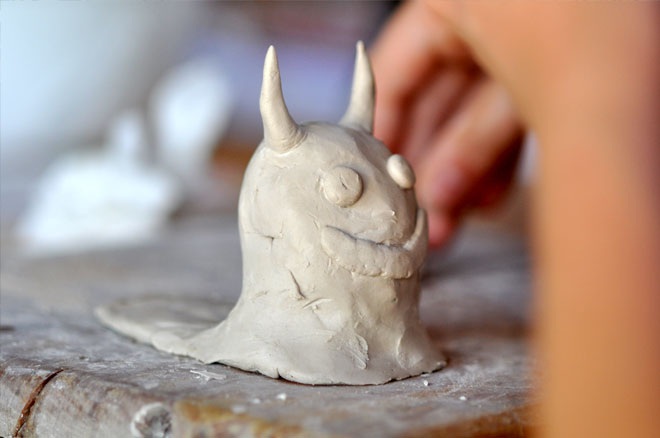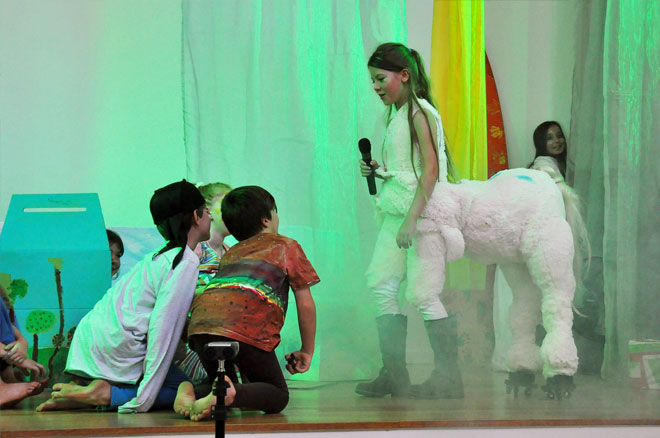Creative arts
For example, children presenting a project in maths might choose to convey their learning by writing or drawing on paper, by making a model, on audio tape, through drama or possibly a combination of these media.
Learning in the arts is fundamentally an experiental and practical process. The arts provide students with opportunities for creative, imaginative and innovative thought and action and encourage risk-taking in situations where there is not necessarily one correct solution or outcome.
We include in the term "arts" forms such as art, craft, drama, dance, music, graphic communication and media education. In addition to these forms, other areas of learning such as literature and writing will have an obvious arts emphasis.
Environment and resources
The unique nature of the arts as a means of developing aesthetic awareness underlies our planning across the curriculum. We believe that the arts provide a range of unique experiences for all students and are essential for their total development.
The particular environment of Kinma, in its bush setting, provides us with a valuable resource for the arts. This is used in various ways such as making bush furniture, playing on a sound sculpture set amongst the banksias, using rocks for grinding ochres for painting, digging clay from surrounding areas and sketching the rich variety of flora on our site.
By using our resources in this way students are able to develop an aesthetic awareness of their environment and extend their skills literally from the earth upwards.
Children, from an early age, are encouraged to be resourceful in the way they use their environment. For example, creating structures and using spaces for dramatic play, the children develop imaginative solutions to problems which interest them. In such ways, the arts are intrinsically linked with the development of social, cognitive and language skills. As simply play experiences extend into play-making for an audience, teachers initiate experiences to challenge the children to develop specific skills to convey their meaning through the medium of drama.

Music and performance arts
In the area of music, song-writing develops from simple chants, through groups making words and music for their own songs, to individuals composing songs. Children use voice and instruments to express and communicate feelings and ideas.
The opportunity to experience and evaluate a range of media forms is fundamental to our planning of theme work. Students are helped to understand and use appropriate and imaginative ways of using a variety of media such as print, radio, film, television and photography. This, in turn, enables students to become more critical receivers of media in their own environment.
Students learn in the arts through their own experience and from the work of others. The kind of model which teachers provide is a powerful influence on children's perception of artistic behaviour and the creative process. To this end, we arrange for artists (across the art forms) to come in to Kinma and spend time working with the children. In this way teachers can broaden their skills and awareness of creative processes and can follow up the visits through careful programming.
Perceiving, transforming, appreciating and expressing are the fundamental elements of our learning models in the arts.

Term Dates 2025
- Term 1: Tues 4 February to Fri 11 April
- Term 2: Wed 30 April to Fri 27 June
- Term 3: Wed 23 July to Fri 26 Sep
- Term 4: Wed 15 Oct to Wed 17 Dec
Term Dates 2026
- Term 1: Mon 2 Feb – Thu 2 April
- Term 2: Wed 22 April – Fri 26 June
- Term 3: Wed 22 July – Fri 25 Sep
- Term 4: Wed 14 oct – Wed 16 Dec
Contact us
127 Coolowie Rd,
Terrey Hills NSW 2084
Find us on Google Maps
Primary: +61 2 9450 0738
Preschool: +61 2 9486 3018
Email Kinma

